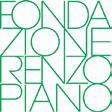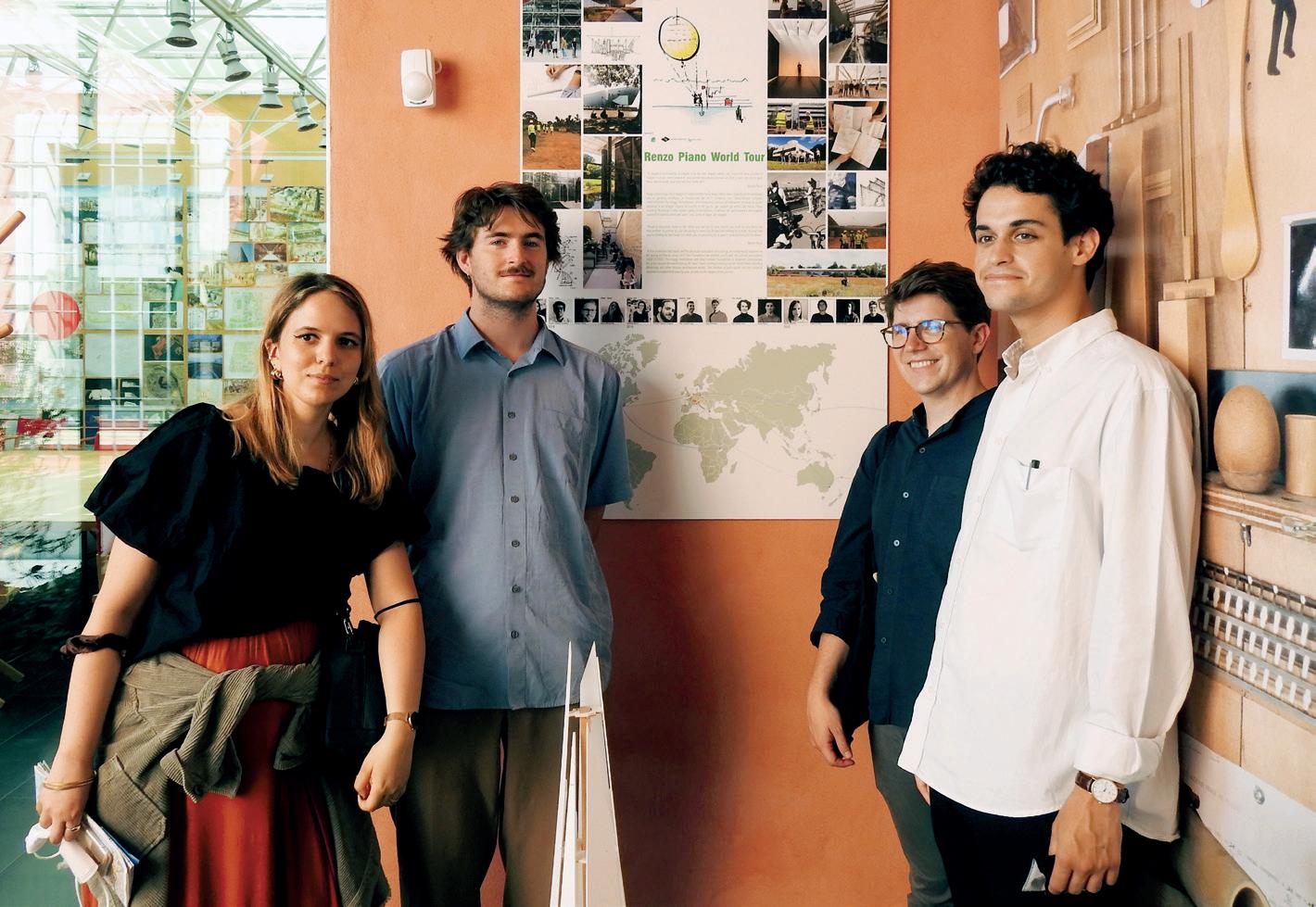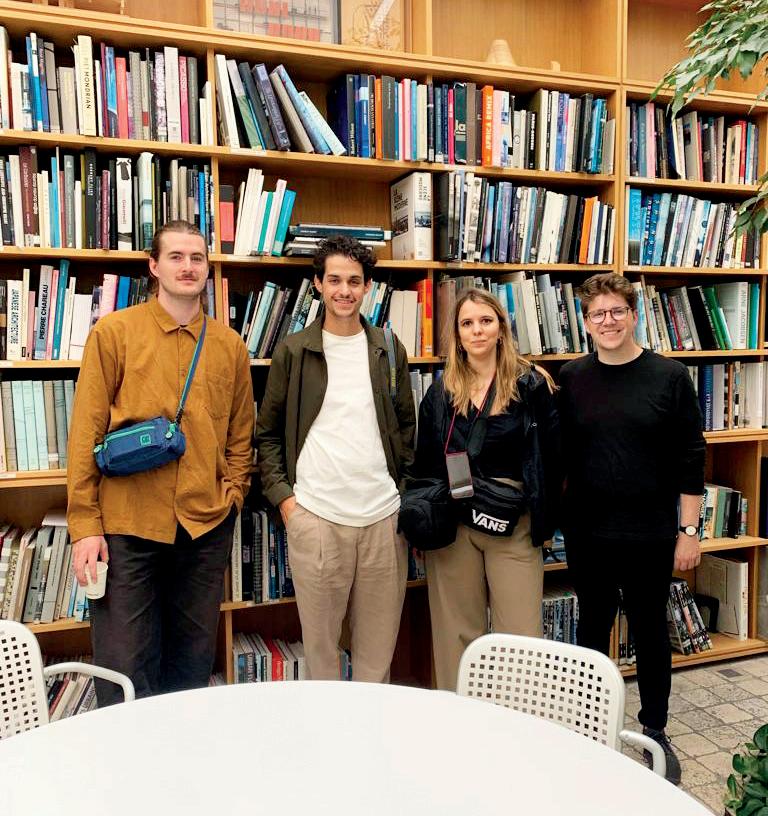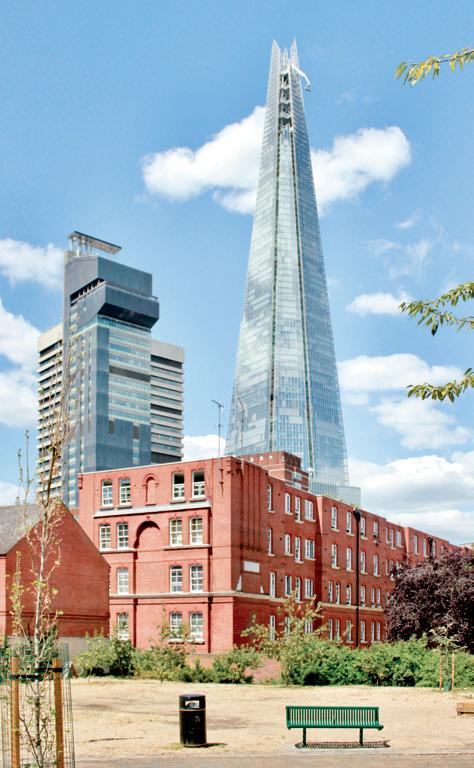

R ENZO P IANO W ORLD
Forty days journey discovering the architecture of RPBW

A project sponsored by




ISBN 978-88-6242-852-1

First edition June 2023
© LetteraVentidue Edizioni

© Fondazione Renzo Piano
© Texts: Alberta Benedetti, Manuel Bouzas, Nicholas Coates, Joseph de Metz

© Articles: professionearchitetto.it


© Translations: WorldBridge
Photographers:
© Alberta Benedetti: pp. 23, 52, 56, 61, 69, 70, 78, 80, 84, 87, 91, 92, 117, 118, 128, 132, 133, 140, 141.
© Manuel Bouzas: pp. 20, 25, 27, 29, 31, 34, 41, 42, 44, 45, 47, 57, 59, 68, 70, 75, 76, 82, 83, 86, 124, 125, 126, 138.
© Nicholas Coates: pp. 12, 17, 18, 22, 30, 32, 33, 35, 36, 39, 40, 41, 48, 49, 50, 54, 57, 58, 66, 77, 88, 90, 114, 122, 128, 130.
© Joseph de Metz: pp. 37, 46, 60, 116, 117, 120, 136, 137.
© Elena Spadavecchia/RPBW: p. 16.
© Shunji Ishida/Fondazione Renzo Piano: p. 6.
© Lo Spirito di Stella: pp. 8, 10.
© Elisa Scapicchio/professionearchitetto.it: pp. 93, 94, 134, 139.
No part of this book may be reproduced or transmitted in any form or by any means, including photocopying, even for internal or educational use. Italian legislation only allows reproduction for personal use and provided it does not damage the author. Therefore, reproduction is illegal when it replaces the actual purchase of a book as it threatens the survival of a way of transmitting knowledge. Photocopying a book, providing the means to photocopy, or facilitating this practice by any means is like committing theft and damaging culture.
If any mistakes or omissions have been made concerning the copyrights of the illustrations, they will be corrected in the next reprint.
Book conception: Fondazione Renzo Piano

Book design: Francesco Trovato
Book curator: Lorenzo Ciccarelli with Milly Rossato Piano and Chiara Bennati, Celeste Piano
Book layout: Gaetano Salemi
 picture: Alberta, Joseph, Nick and Manuel at the Renzo Piano Foundation in Genoa
picture: Alberta, Joseph, Nick and Manuel at the Renzo Piano Foundation in Genoa
4 people
40 days
2 continents
11 countries
20 cities
90 buildings
Our story starts almost like this.....
“There are an Italian, a Spaniard, an American, a French on a plane”
 picture: Emergency Children’s Surgical Hospital, Entebbe (2013 – 2020 RPBW and Studio TAMassociati)
picture: Emergency Children’s Surgical Hospital, Entebbe (2013 – 2020 RPBW and Studio TAMassociati)
EUROPE (PART 1)
FRANCE
GERMANY
NEDERLAND
GERMANY
NORWAY
UK
SPAIN
GREECE
TURKEY
AFRICA
UGANDA
EUROPE (PART 2)
ITALY
SWITZERLAND
FRANCE
ITALY
departures days
DAY 1 PARIS
“The place where everything begins”. After two years, here we are! The search of architectural beauty begins from the city of Paris. On the first day of the tour, we visited the Renzo Piano’s studio. We talked with Partners and associated architects about the projects we are going to visit in the next days. We had the opportunity to discuss about the design concepts and their spatial and structural complexities through representations, models, photographs. Moreover, we listened to the stories of who was there from the very beginning.
 picture: Joseph, Manuel, Alberta and Nick in the RPBW Paris Office
picture: Joseph, Manuel, Alberta and Nick in the RPBW Paris Office
DAY 2 PARIS
Today we visited the university campus of the Ecole Normale Supérieure Paris-Saclay, a recent project by RPBW. We had a fantastic tour by JeanBernard Mothes, uncovering all of the visible and hidden moments of the project. The heart of the campus is a central courtyard – an oasis flanked and overlooked by laboratories, workshops, and classrooms. An architecture made of concrete, steel and glass with simple clean regular shapes has inside a beautiful garden. It is really nice to see the strong link between architecture and nature in this project and how they are able to speak
to each other. The glass laboratories face directly the greenery. There are also small winter gardens inside, on the top floor of the atrium. Nature actively participates to what happens inside and its sounds help studying and working. The balconies of the building façade facing the courtyard are covered by a mesh. This mesh takes on infinite variations of tones according to the light that strikes it (dark gray, white gray, etc.), while the glass reflects all the colors in the garden. So, when you are inside the courtyard, you see how architecture changes as nature changes.

 picture: Paddington Square, London (2015 – in progress RPBW)
picture: Paddington Square, London (2015 – in progress RPBW)


 picture: Ronchamp Gatehouse and Monastery, Ronchamp (2006 – 2011 RPBW)
picture: Ronchamp Gatehouse and Monastery, Ronchamp (2006 – 2011 RPBW)
ARCHITECTURE, NATURE AND SACRED
Alberta BenedettiThe main question I asked myself during this trip was “what is beauty?” In every city, in every building and in every space I visited during the trip, I looked for an answer.
At Ronchamp, one of the last stops before returning home, the answer I gave myself became clear. It was the first time during the trip that we were completely surrounded by nature: no noise, no distractions from the big cities. It was just us, nature, architecture and the sacred. When we were there, time suddenly slowed down.
In Ronchamp, we were guests in the Ronchamp Gatehouse and Monastery on the Bourlémont hill. The experience in the monastery was one of the most intense of the trip.
The concrete and glass building stands on the side of the hill. It does not want to show itself but stands almost in a sense of respect for its surroundings. The very simple monastery is in close contact with nature. Filled with these strong feelings, in the afternoon we decided to walk above the roof garden of the main building. At the top, we watched the sunset and the
forest. Surrounded by nature, we were enveloped by a deep sense of peace, silence and harmony. Immediately afterwards, the nuns welcomed us and showed us around the building, inviting us to attend mass in the small concrete chapel. Sitting inside during prayer, the atmosphere was strong. The chapel is very simple: three concrete walls and the slightly curved surface of the roof with small cutouts to let the light in. The architecture participated directly in the religious ritual. The chants, the prayers, the material surfaces and the glass reflecting the green became one thing. After the mass, before returning to our rooms, we climbed up the hill where there is the chapel of NotreDame. We stood motionless and could not take our eyes off the raw purity of the white walls, the plastic and sculptural volumes where the concrete roof stood. A sail that leads upwards, suspended, and at the same time protects, guards and takes care of those beneath it. The roof connects the sky, the infinite to the earth, to existence. This play of form apace and light evokes in us spiritual emotions and a strong sense of infinity. I wonder how behind these buildings, there can be the
picture: RPBW Office, 34 Rue des Archives Paris, the Atelier Maquettes

RENZO PIANO WORLD TOUR 2022: THE 40-DAY JOURNEY THROUGH THE ARCHITECTURE OF THE RPBW AND THE GREAT MASTERS BEGINS
“You take delight not in a city’s seven or seventy wonders, but in the answer it gives to a question of yours”. Italo Calvino wrote this in his Invisible Cities, perhaps condensing the idea of the journey into a few words. But if instead of “city” we read “architecture”, then Calvino’s reflections well describe the meaning of the Renzo Piano World Tour, the award, conceived by the Renzo Piano Foundation as a very special opportunity for training and study, and now in its fourth edition, that allows young architects to travel for 40 days to discover the most important achievements that
architecture has produced in recent decades. The four recent graduates, who were selected in 2020, due to the pandemic that has ravaged the globe, are only now beginning their journey among some of the masterpieces that the greatest interpreters of architecture have created. This year, for logistical reasons related to the particular health conditions, the decision taken was to contain the itinerary within the borders of Europe, with a single “detour” to Africa, to Entebbe (Uganda), where the four winners will visit the Children’s Surgical Hospital of the Emergency NGO,
founded by Gino Strada. An itinerary that touches more than 20 cities, with the possibility of visiting 90 works designed by the Renzo Piano Building Workshop and others famous architects of the past and present, without forgetting the great masters such as: Le Corbusier, Auguste Perret and Gerrit Rietveld. A heritage that is an expression of the art of making buildings, available to be observed, investigated, experienced; ready to answer the questions, all personal, that each young architect will want to ask.
“The idea of this trip came about precisely so that the young people could, by visiting the buildings, grasp aspects that cannot be perceived from a distance. Visiting a building is an irreplaceable experience,
even though access to information today is very easy. Everyone will be able, depending on their interests, to grasp the details that interest them most. There will be someone more sensitive to the construction details, others to the social aspects of architecture: each experience depends on one’s perception of things, one’s personal sensibilities and specific interests. Observing how buildings are lived in, inhabited and used is also an important experience”, explains Milly Rossato Piano, director of educational programs and conservation at the Renzo Piano Foundation. The four architects, who started their tour from Paris on 30 June, were chosen by four prestigious universities: each selected a young graduate through a

